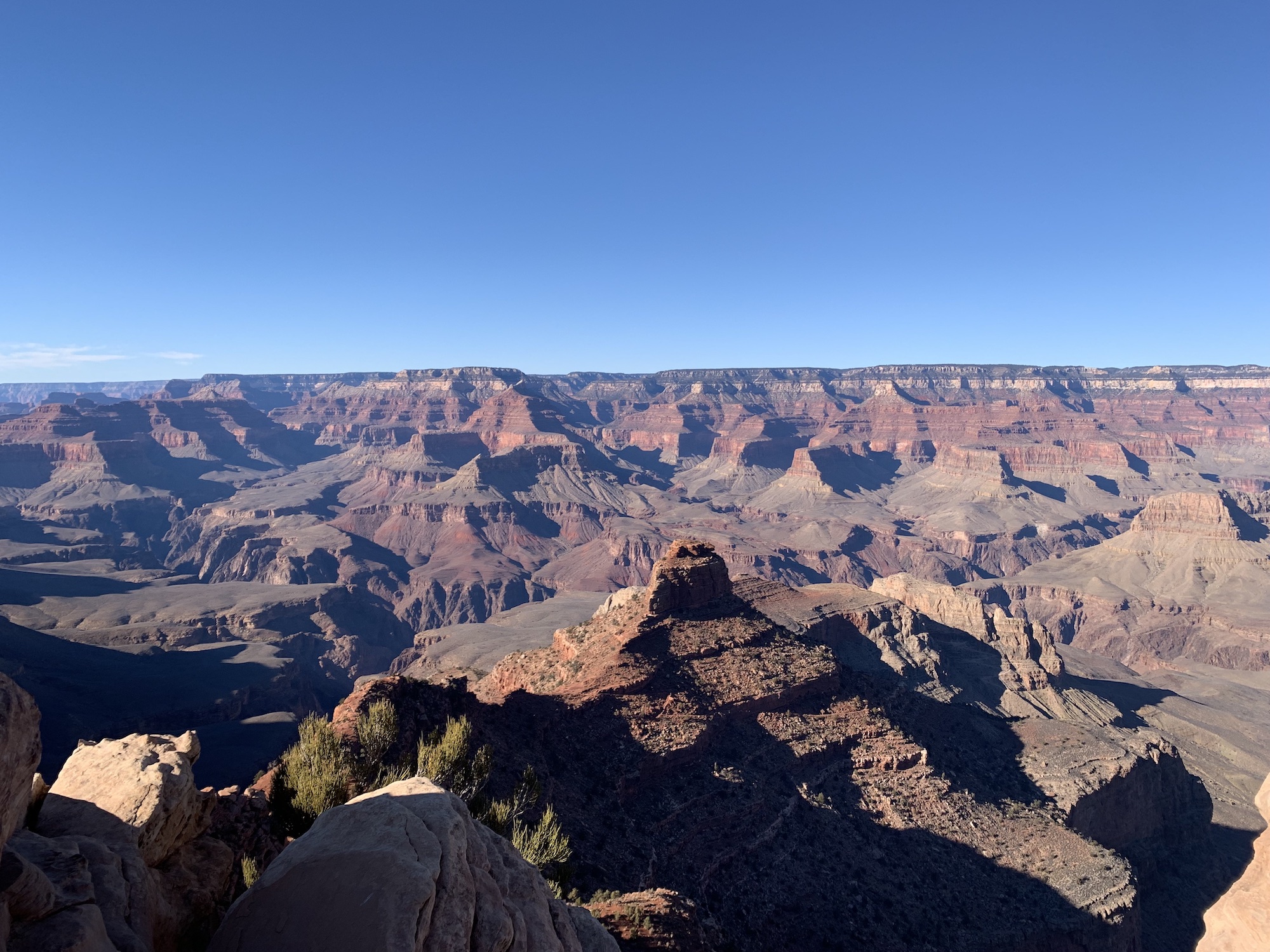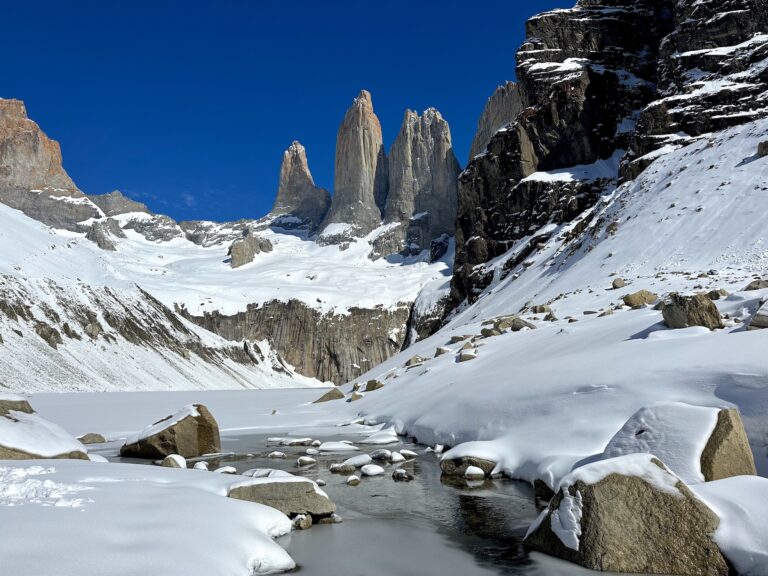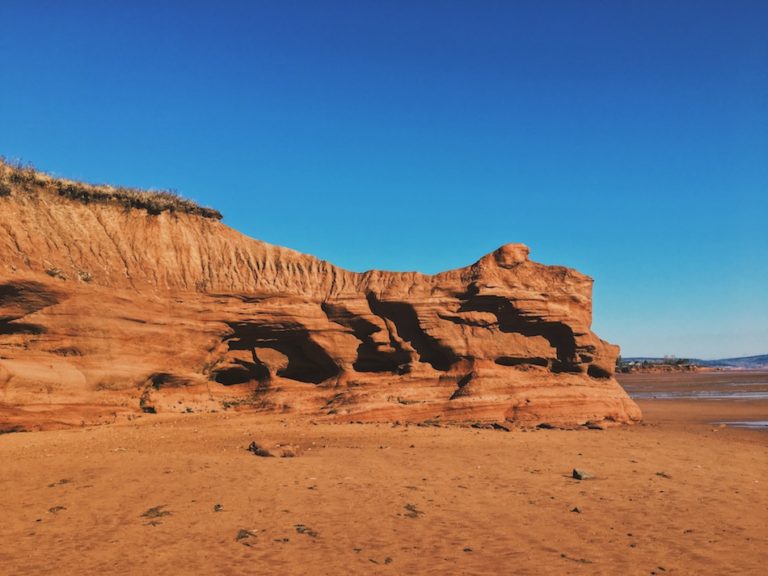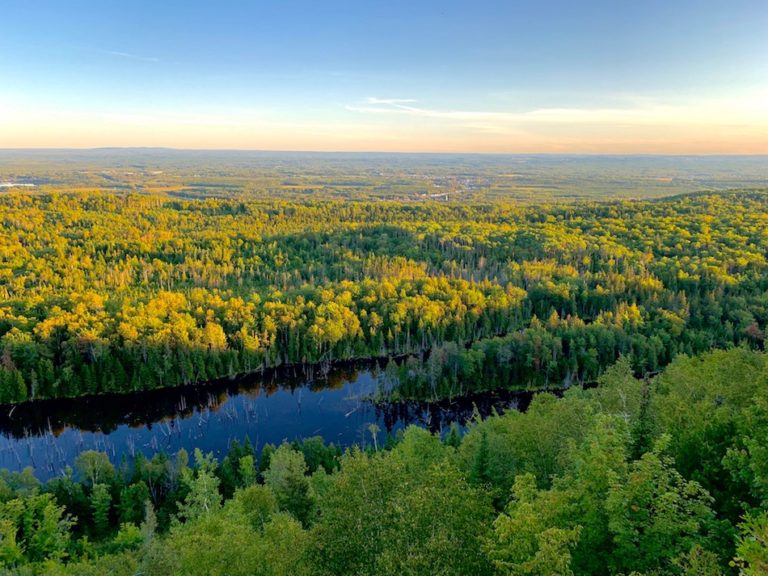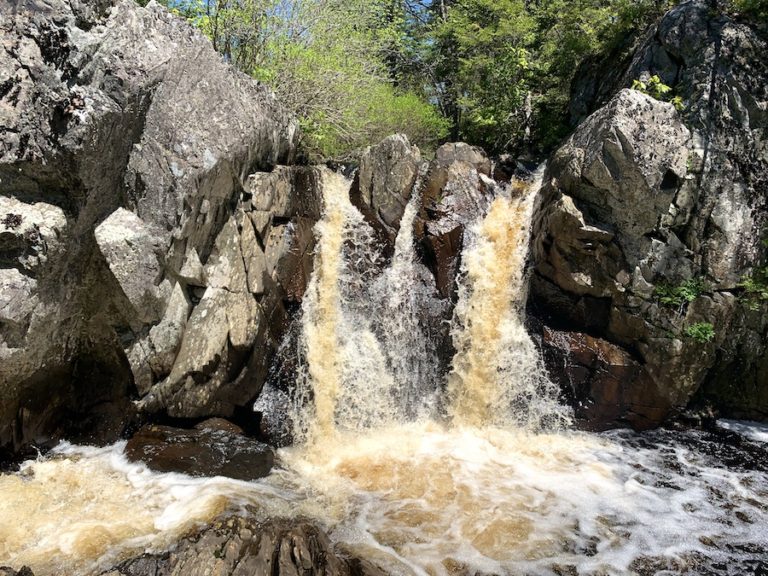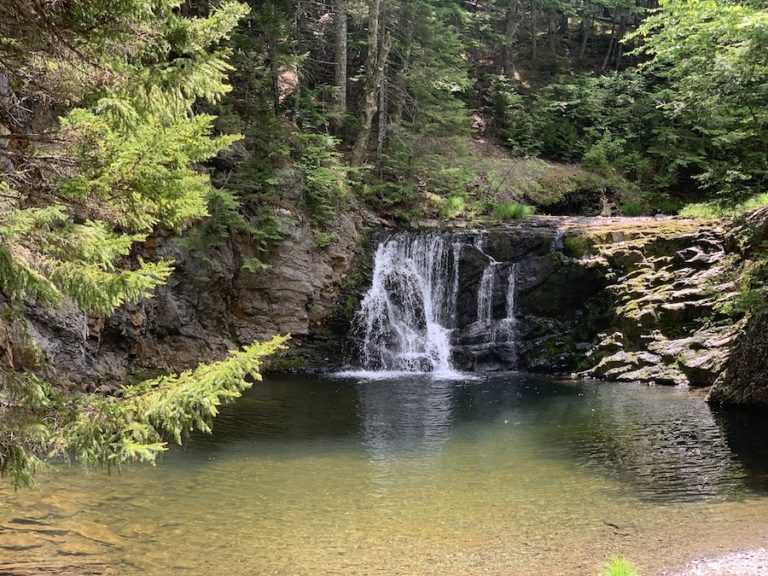South Kaibab Trail To Ooh Aah Point In The Grand Canyon
The South Kaibab Trail is a challenging yet rewarding 6.3-mile (10.1 km) trail that descends into the canyon and features numerous switchbacks. Hikers can complete the entire trail and hike from the South Rim to the North Rim of the Grand Canyon or stop at any of the various lookout points and turn around for a shorter hike. The South Kaibab trail can be completed as a day trip up to Skeleton Point and an overnight backpacking trip past this point.
In this article, we will mainly be focusing on the route from South Kaibab Trail To Ooh Aah Point. However, we will touch on general information you should know before hiking to any point along the trail.
Difficulty: Moderate (to Ooh Ahh Point). The full trail is rated hard.
Length: Ooh Aah Point 1.8 mile / 2.9 km, Cedar Ridge 3 mile / 4.8 km, Skeleton Point 6 mile / 9.7 km
Suggested Duration: around 1 to 1.5 hours to Ooh Aah Point and back.
Signage: Great signage throughout
Facilities: Water refill station at the trailhead only and washrooms at the trailhead and Cedar Ridge.
Disclaimer: This article includes affiliate links. If you click one of them, we may receive a small percentage of the sale at no extra cost to you. Thank you for your support!
Key Features Of South Kaibab Trail
- Located in Grand Canyon National Park
- Offers stunning panoramic views of the Grand Canyon
- A shorter but steeper alternative to the Bright Angel Trail
- Descends from the South Rim to the Colorado River
- Well-maintained trail with no water sources along the way
- Notable viewpoints include Ooh Aah Point and Cedar Ridge
- Option to complete as an overnight or day hike
Facilities And Services
- Shuttle bus near the trailhead
- Water refill station and restrooms at the trailhead
- Restroom at Cedar Ridge
Before You Start Hiking South Kaibab Trail
Whether you are completing a day or overnight hike, there are a few general things to know before you head out on the South Kaibab Trail. First things first, because the trail is located within the Grand Canyon National Park, you will need a pass or permit to enter.
Entrance Fees at Grand Canyon National Park
As of December 2022, the fees are as follows:
- Vehicle Permit USD 35 (per vehicle with up to 15 passengers)
- Individual Permit USD 20 (per person on foot, bicycle or park shuttle bus)
- Motorcycle Permit USD 30 (per one non-commercial motorcycle)
Digital permits can also be purchased online at recreation.gov before visiting.
In addition to individual permits, annual and lifetime passes can be purchased at the National Park Service website. These passes include access to various other national parks around America.
Getting To The Trailhead
The only way to reach the trailhead is by shuttle bus, bike or walk. There are no private vehicles allowed on Yaki Point Road or South Kaibab Road. If you choose to walk or bike, it is around a half-mile from Desert View Road to the trailhead.
The best way to get to the South Kaibab trailhead is to take the free shuttle bus located within the Grand Canyon National Park. The hours of operation change and vary depending on the year, so it is important to check the schedule prior to planning your hike. The shuttle runs all year long and comes around every 15 minutes. The South Rim Orange Route bus goes from the visitor centre to the South Kaibab trailhead, Yaki Point and Pipe Creek Overlook. Then, it returns back to the visitor centre with a few additional stops along the way.
For those looking to head to the trail before the free shuttle bus starts running, try the Hikers’ Express Shuttle bus. This bus has three stops within the Grand Canyon Village that take hikers to the South Kaibab Trailhead.
Stop #1: Bright Angel Lodge
Stop #2: Backcountry Information Center
Stop #3: Visitor Center Shuttle Bus Terminal
The Hikers’ Express Shuttle bus is an excellent option for those looking to get to the trailhead before dawn. It does not return hikers back to the village. To view the current bus schedule, click here.
Weather And Water
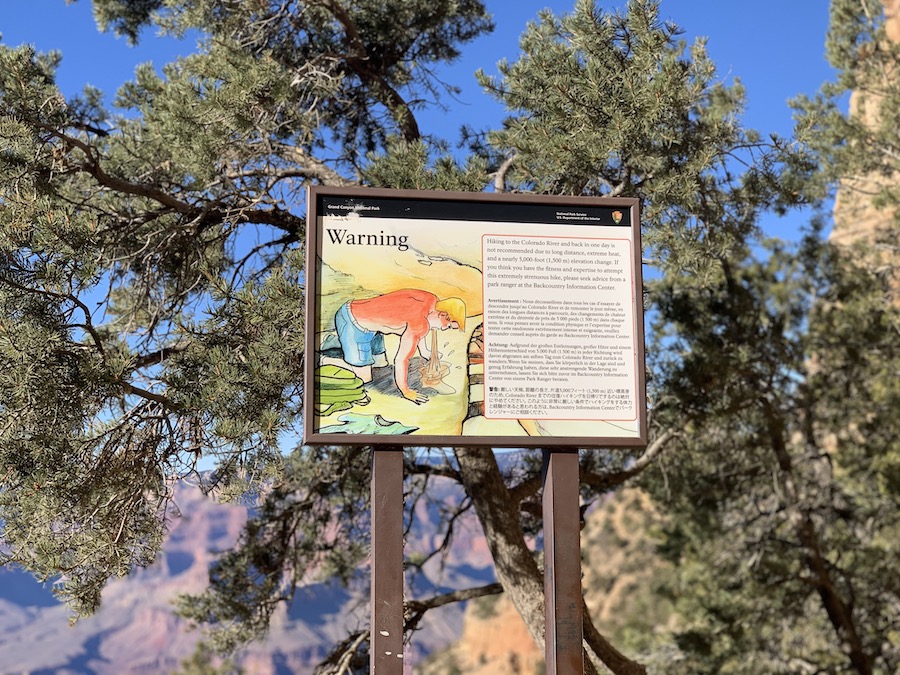
Fatigue and dehydration are two big things you should be aware of when hiking this trail. As it is quite challenging and has no shade, you will be in the direct sun for the majority of this hike. It is incredibly important to bring enough water for the duration of your planned hike. Other than the seasonal water refill station at the trailhead, there is no water along the trail. Be sure to pack a few litres of water, fill your bottles if needed at the trailhead, and bring salty snacks.
Weather at the Grand Canyon can be unpredictable, especially in the Fall and Spring. We encourage you to pack layers, a rain jacket, and sun protection to be prepared for any changes.
In the winter months, you are encouraged to bring shoe traction devices such as microspikes or crampons and hiking poles. The trails can become quite slippery and icy. Hikers should take appropriate precautions.
Our Experience Hiking South Kaibab Trail
When we visited the Grand Canyon, we only had one full day (and a half day) before returning to Nevada. So, we tried to make the most out of our time and see as many trails as possible! After completing a section of the Bright Angel Trail, we drove to the visitor center and walked the Rim Trail to the South Kaibab trailhead.
When we reached the trailhead, we filled out bottles at the water fill station and began hiking. The first mile of this hike is the steepest, but the switchbacks make it easier to hike up and down the canyon.
Here is a photo of the switchbacks.
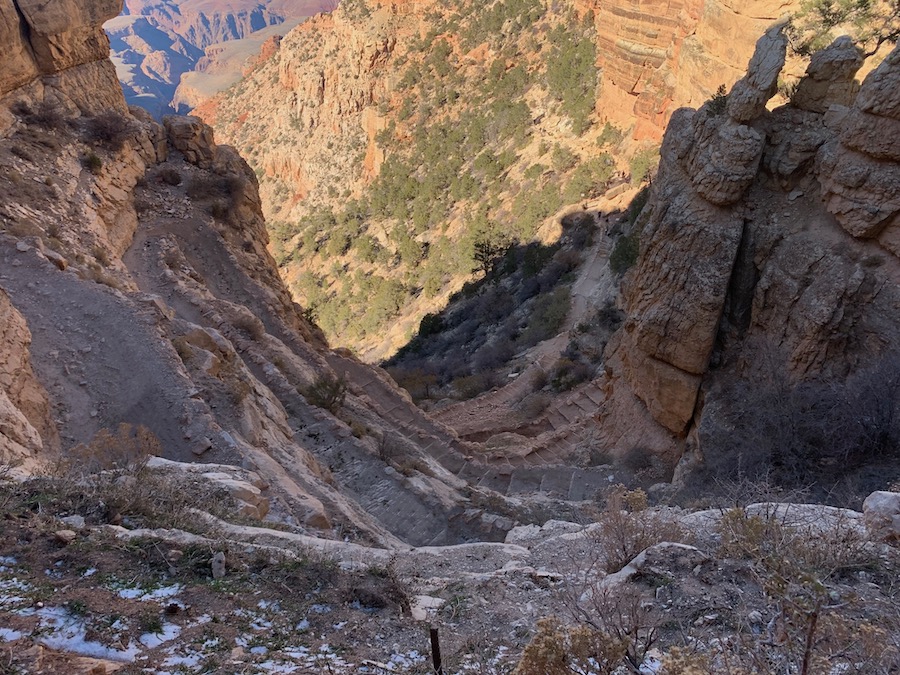
The views along this trail are spectacular and, honestly, even better than Bright Angel Trail. If you only have time for one hike while visiting the Grand Canyon, the South Kaibab Trail should be it!

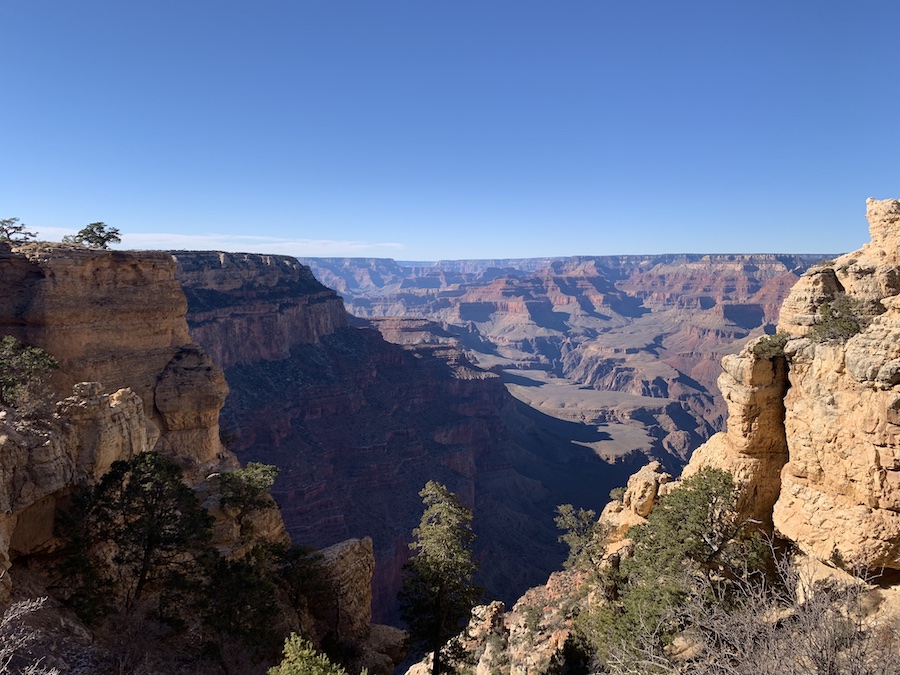
When we reached Ooh Aah Point, we could immediately tell where it got its name from. At 6660 feet (600 feet under the canyon rim), the views of the Grand Canyon were absolutely breathtaking.
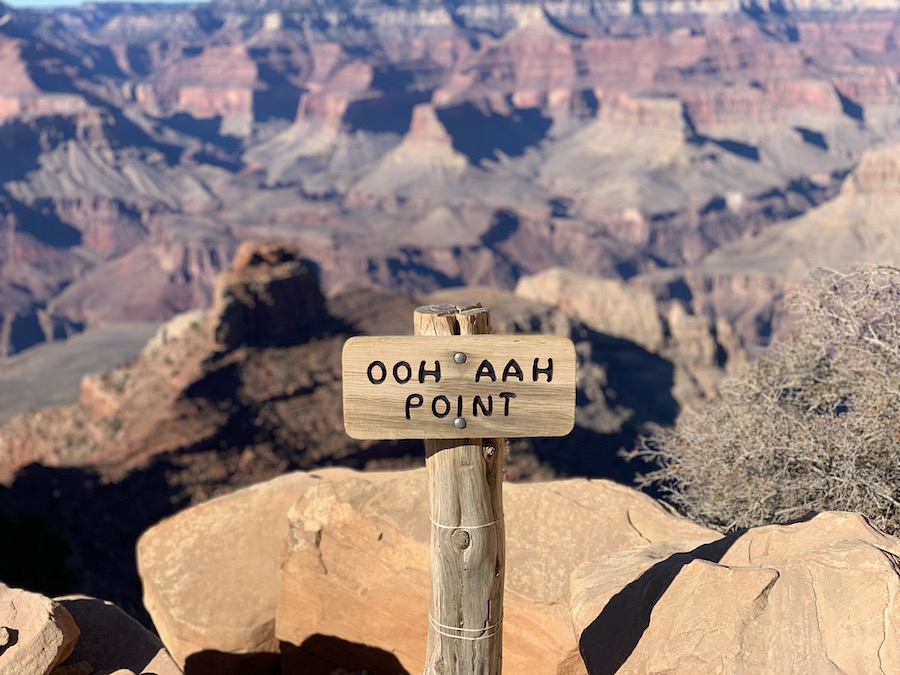
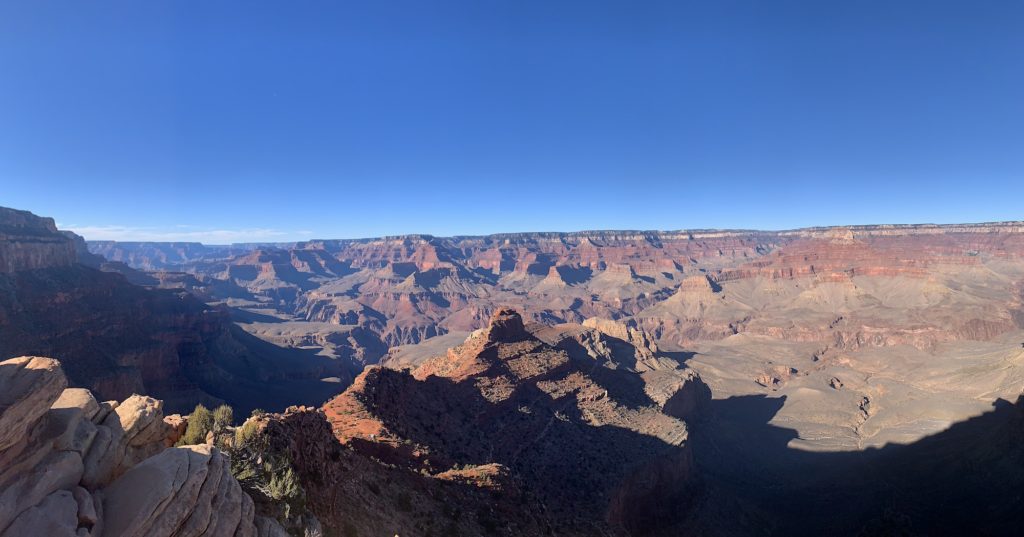
Once we reached Ooh Aah Point, we contemplated going further down the trail, but time was just not on our side. It was already 3 p.m., and we knew we wanted to go for a sunset hike (the sun started to set around 5 p.m. this time of year). So, we made our way back.
While the hike down was quick, the return took twice as long as it was all uphill. Once we reached the top, we caught our breath, refilled our water bottles and returned to the visitor centre. From here, we walked to Yavapai’s Point to catch the most breathtaking sunset over the canyon. Check it out below!
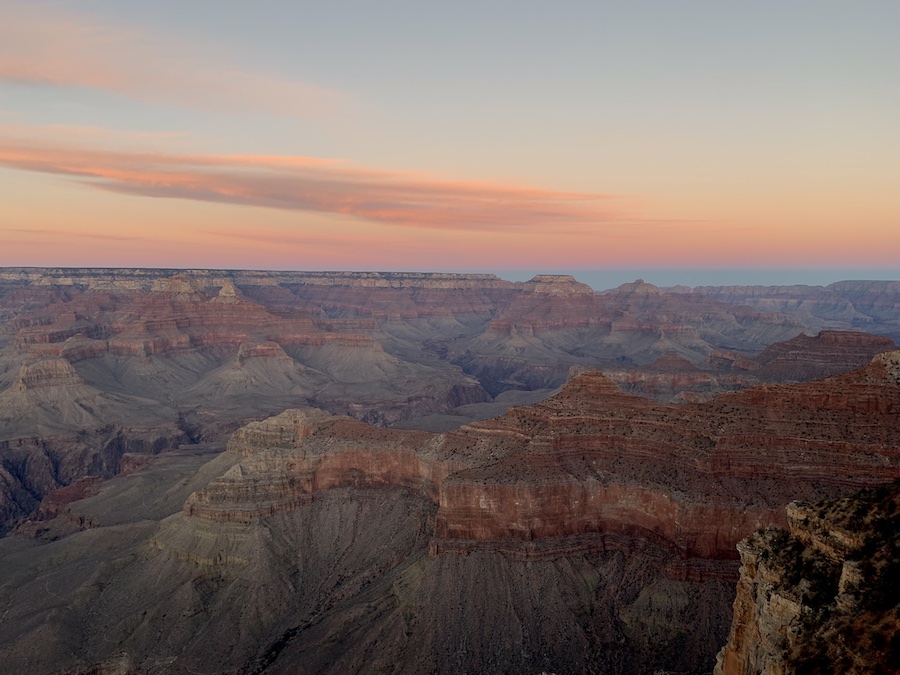
Checklists And Recommended Gear
The following is a guide to our recommended gear for a day hike on the South Kaibab Trail.
- Whistle
- Water Bottle (lots of water)
- First aid kit
- Salty snacks
- Sunhat
- Sunscreen
- Sunglasses
- Phone or camera
- Comfortable hiking boots – Women’s // Men’s
- Layers of clothes
- Cascade Hiking Poles
- Map
Related Hikes
Other hikes on the South Rim Of the Grand Canyon
- Rim Trail
- Bright Angel Trail
- Hermit Trail
- Grandview Trail

